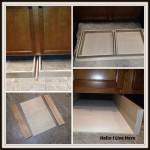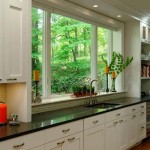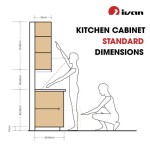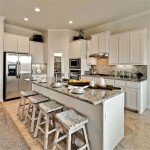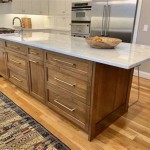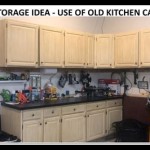Best Paint For Kitchen Cabinets: Oil or Water-Based?
Selecting the appropriate paint for kitchen cabinets is a pivotal decision impacting both the aesthetic appeal and longevity of this central element of the home. Two primary categories of paint dominate the market: oil-based and water-based. Each type possesses distinct characteristics, advantages, and disadvantages pertinent to the specific demands of kitchen cabinetry. Factors such as durability, application, drying time, and environmental impact must be meticulously considered to arrive at an informed and suitable choice for the project.
The decision between oil-based and water-based paint extends beyond mere aesthetic preference. It encompasses a comprehensive understanding of the inherent properties of each medium, their interaction with cabinet materials, and the long-term implications for maintenance and upkeep. Furthermore, the skill level of the applicator and the availability of appropriate tools and equipment play a significant role in the overall success of the painting endeavor.
Understanding Oil-Based Paints
Oil-based paints, also known as alkyd paints, utilize a solvent-based carrier to suspend pigments and binders. This formulation contributes to several key characteristics. Historically, oil-based paints have been favored for their exceptional durability and ability to create a hard, resilient finish. This robust surface is particularly advantageous in high-traffic areas like kitchens, where cabinets are often subjected to frequent use, cleaning, and potential impacts.
The inherent properties of oil-based paints also contribute to their excellent leveling capabilities. As the paint dries, it tends to flow smoothly, minimizing brush strokes and resulting in a uniform, professional-looking finish. This self-leveling quality is particularly beneficial when painting intricate cabinet designs or surfaces with imperfections.
However, oil-based paints are known for their slower drying times compared to their water-based counterparts. This extended drying period can be a disadvantage for projects with tight timelines or in environments where dust and debris are prevalent. The slow drying also necessitates meticulous surface preparation to prevent imperfections from being trapped within the paint film.
Another significant consideration with oil-based paints is their higher volatile organic compound (VOC) content. VOCs are released into the air as the paint dries, contributing to air pollution and potentially posing health risks. Due to increasing environmental regulations and concerns about indoor air quality, low-VOC or zero-VOC alternatives are often preferred. Furthermore, the cleanup of oil-based paints necessitates the use of solvents such as mineral spirits or paint thinner, adding to the environmental burden.
In summary, while oil-based paints offer superior durability and leveling, their slow drying times, high VOC content, and the necessity for solvent-based cleanup present challenges that must be carefully weighed against the benefits.
Understanding Water-Based Paints
Water-based paints, also referred to as latex or acrylic paints, utilize water as their primary solvent. This fundamental difference in composition leads to a distinct set of attributes compared to oil-based paints. One of the most significant advantages of water-based paints is their low VOC content, making them a more environmentally friendly and health-conscious choice.
Water-based paints also dry significantly faster than oil-based paints. This rapid drying time allows for quicker project completion and reduces the likelihood of dust and debris settling on the painted surface. Furthermore, the fast drying time facilitates the application of multiple coats in a single day, streamlining the painting process.
Cleanup with water-based paints is straightforward, requiring only soap and water. This eliminates the need for harsh solvents and simplifies the cleaning process of brushes, rollers, and spills. The ease of cleanup is particularly appealing for DIY projects or projects involving multiple painters.
However, water-based paints traditionally lacked the same level of durability as oil-based paints. Early formulations were more susceptible to chipping, scratching, and water damage. This was a significant drawback for kitchen cabinets, which are frequently exposed to moisture and abrasive cleaners.
Modern advancements in paint technology have significantly improved the durability of water-based paints. High-quality acrylic latex paints now offer comparable or even superior durability to oil-based paints, particularly in terms of UV resistance and color retention. These advanced formulations incorporate specialized resins and additives that enhance the paint's hardness, adhesion, and resistance to common kitchen hazards.
Furthermore, water-based paints tend to be more flexible than oil-based paints, making them less prone to cracking and peeling, especially on wood surfaces that expand and contract with changes in temperature and humidity. This flexibility is a critical advantage for kitchen cabinets, which are often subjected to these fluctuations.
Key Considerations for Kitchen Cabinet Paint Selection
When choosing between oil-based and water-based paint for kitchen cabinets, several key considerations should guide the decision-making process. These factors encompass the desired finish, the level of durability required, the environmental impact, and the application process.
Durability:
The level of wear and tear the cabinets will endure directly impacts the required durability of the paint. For high-traffic kitchens with frequent use, a highly durable paint is essential. While oil-based paints traditionally held an advantage in this regard, modern high-quality water-based acrylic latex paints now offer comparable or superior durability, particularly in terms of resistance to chipping, scratching, and water damage.Finish:
The desired aesthetic appearance of the cabinets plays a crucial role in paint selection. Oil-based paints typically provide a smoother, more porcelain-like finish due to their superior leveling properties. However, advanced water-based paints with self-leveling additives can achieve a similar level of smoothness. The sheen of the paint also affects the overall look and feel. Higher sheen paints, such as gloss or semi-gloss, are more durable and easier to clean but may also highlight surface imperfections. Lower sheen paints, such as matte or eggshell, provide a softer look but may be less resistant to stains and require more frequent cleaning.Environmental Impact and VOCs:
Concerns about environmental impact and indoor air quality have increasingly favored water-based paints due to their lower VOC content. Oil-based paints release higher levels of VOCs, which can contribute to air pollution and pose health risks. Choosing a low-VOC or zero-VOC water-based paint minimizes these concerns and promotes a healthier indoor environment. Furthermore, the ease of cleanup with water-based paints reduces the need for harsh solvents, further minimizing the environmental footprint.Application:
The ease of application and the required skill level are also important considerations. Water-based paints are generally easier to apply than oil-based paints, requiring less prep work and cleanup. They also dry faster, allowing for quicker project completion. However, oil-based paints may provide a smoother finish and better coverage, especially on darker surfaces. The choice of application method, whether brush, roller, or sprayer, also affects the final result. Spraying typically provides the smoothest and most even finish, while brushing and rolling are more suitable for smaller projects or areas with intricate details.Surface Preparation:
Regardless of the chosen paint type, proper surface preparation is crucial for achieving a successful and long-lasting finish. This involves cleaning the cabinets thoroughly to remove any dirt, grease, or loose paint. Sanding the surface helps to create a smooth and even base for the new paint to adhere to. Priming the cabinets is also essential, especially if they are made of bare wood or have been previously painted with a different type of paint. Primer seals the surface, improves adhesion, and helps to prevent the existing paint from bleeding through the new paint.Cost:
The cost of oil-based and water-based paints can vary depending on the brand, quality, and quantity. Generally, high-quality water-based acrylic latex paints are comparable in price to oil-based paints. However, the cost of solvents for cleanup and disposal may add to the overall expense of using oil-based paints. The long-term cost of maintenance and potential repairs should also be considered. More durable paints that resist chipping, scratching, and water damage may require less frequent touch-ups and repainting, ultimately saving time and money.Ultimately, the best paint for kitchen cabinets is the one that best meets the specific needs and priorities of the project. By carefully considering the factors outlined above, homeowners and professionals can make an informed decision that results in beautiful, durable, and long-lasting kitchen cabinets.

Choosing Kitchen Cabinet Paint Oil Based Paints Vs Water Or Latex

Best Paint For Cabinets Oil Enamel Or Hybrid

Kitchen Cabinets Best Paint For Oil Based Waterbased Cleaning Tsp Woodworker S Journal

Water Based Vs Oil Paints Which Is Better For Kitchen Cabinets

Best Paint For Your Next Cabinet Project The Home Depot

The Best Paint For Your Cabinets 7 Options Tested In Real Kitchens

How To Paint Kitchen Cabinets Without Sanding Or Priming

The Best Paint For Kitchen Cupboards Owatrol Usa

What Are The Best Paint For Kitchen Cabinets

Best Paint For Cabinets And Doors
Related Posts

